La Traviata
La Traviata – The Fallen Woman – is the story of Violetta, a courtesan dying of consumption and her adoring Alfredo, who forsakes his noble family for love, only to lose Violetta when his father convinces her that she should sacrifice their love to sustain the social position of the family.
Verdi used music to express his compassion for the frailties of characters such as these, and the society in which they moved. His operas are more than stories. In La Traviata, as well as a tragic love story, he introduced themes of money, social class, exclusion, gambling, and illness – all of which are expressed sensitively in the music as well as the lyrics.
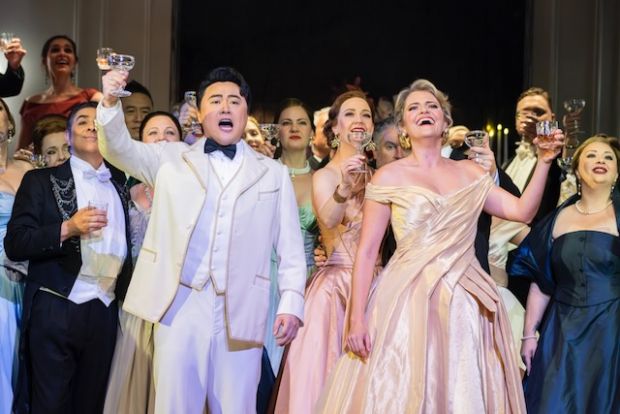
Director Sarah Giles highlights this with her interpretation of the prelude. Here Verdi used the high, delicate notes of the violin to introduce the tragedy of his heroine Violetta’s failing health and her dissatisfaction with her life as a courtesan. Giles sets Violetta rising slowly from her bed and her recumbent paramour Baron Douphol and striving to defray the debilitating effects of her illness. In an adjoining room, early partygoers in stylised positions and small, slow, almost robotic gestures depict an image of the life she has chosen. Giles' directions are as symbolic as the music – her deft touch gently suggesting the fragility of the society that Verdi’s opera will describe.
Conducted by Johannes Fritzsch, the orchestra then leads into the party where Violetta will struggle to be carefree and gay – and where she will be introduced to Alfredo ,who has loved her from afar for a year, calling every day during her illness to in enquire of her health. As Alfredo sings the rousing “Brindisi”, a toast to the fleeting pleasures of life, Violetta succumbs to the promise of his love and the hope of some joy in the last months of her life.
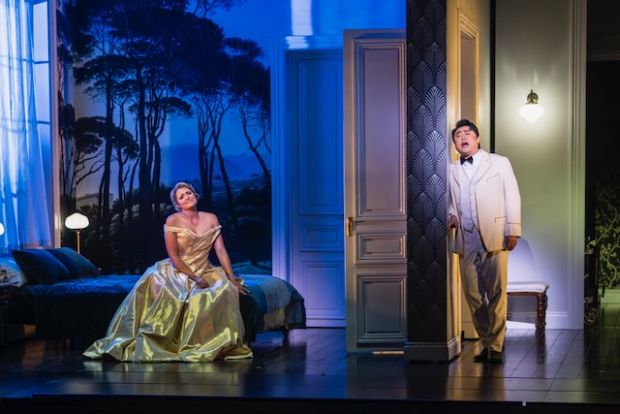
Samatha Clarke brings belief as well as her impressive voice to the tragic Violetta. There is not a moment when the audience cannot see how her pain and frailness overshadow her happiness – even when she sings the beautiful “Sempre Libra” (Always Free). Giles’ direction ensures every gesture or expression accentuates the emotional range of her voice and its incredible power. Clarke’s Violetta finds both the tragedy and the humanity of Verdi’s heroine and the vocal possibilities his music demands of her.
The Alfredo depicted by South Korean tenor Ji-Min Park is determined and understanding. Park uses his voice to highlight the depth of his feelings for Violetta, especially when she accepts the reality of his love – and when he realises that she has left him. He stuns with his vocal control and his ability to move from gentleness to driving anger and frustration – and, eventually, to despair.
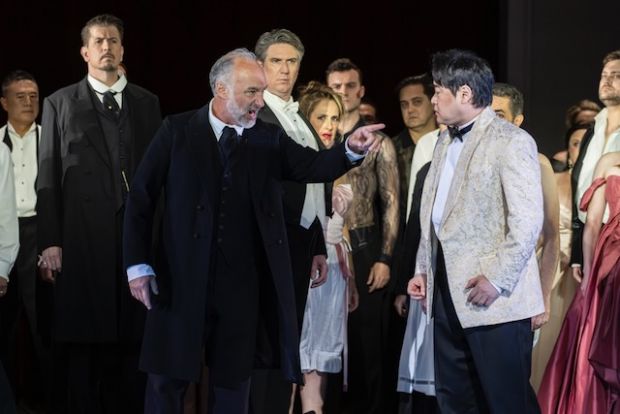
Alfredo’s father, Giorgio Gemont, is played by the very popular José Carbó. Carbó brings a wealth of experience to the role, finding both resolve and calmness in his approach to Violetta – and compassionate understanding of the depth and fragility of her love. The grief he expresses in “Piani, piangi” (Weep, weep) is spellbinding – leaving the audience holding its breath during the last impassioned notes.
Angela Hogan revels in her role as the fun-loving Flora – and the sassy blocking that Giles gives her, the other courtesans and their lusty lovers. Giles used Verdi’s ‘party’ scenes to inject a little risqué humour and suggestive cheekiness that emboldens the action and highlights the detail and splendour of Charles Davis’s elaborate Victorian costumes.
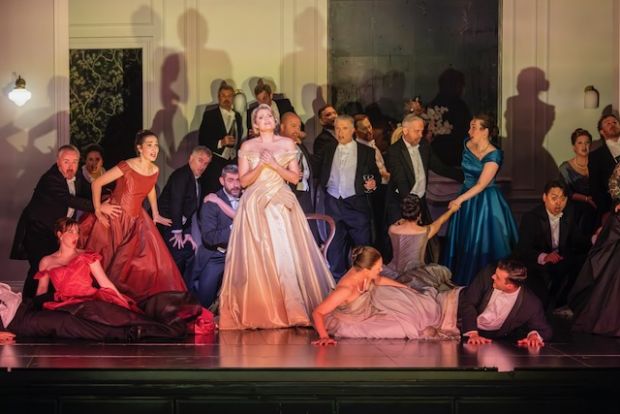
Metres of shiny, colourful satins, black lace, sparkling accessories and plunging necklines are matched with formal dinner suits decorated in ornate gold embroidery, sparkling beading and … in some scenes … white underwear and black garters! The cast must enjoy the richness and elegance of the costumes and the feisty action, as well as singing the rousing “Brindisi” and the folksy “gypsy’ and “matador” choruses at Flora’s party.
Charles Davis’s set is cleverly stylistic – and a happy change from the projections and images that have prevailed over the past few years. Sliding dividing walls and a low proscenium complete with ceiling and a hanging light set the opening scenes in Violetta’s Paris “establishment”. Cunningly, they then become the living room of her country home, the garden beyond symbolised by a single tree before a vast, curved, brightly lit cyclorama screen. The effect of this set housed within the vast stage of the opera theatre seemed to accentuate Violetta’s loneliness, the hopelessness of her plight and echoing beauty of Verdi’s music.
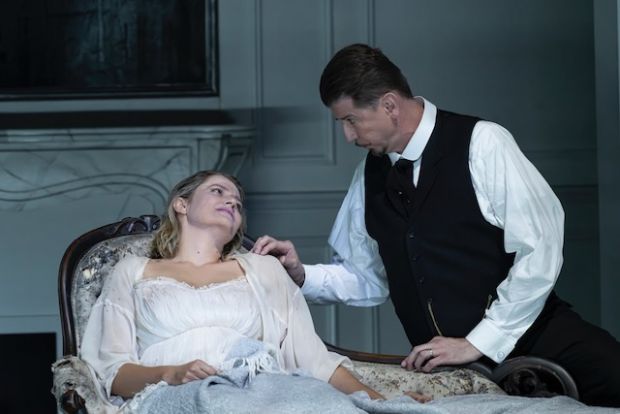
This is a stunning production that brings contemporary colour and humour to a story that is especially relevant in a time where society is being challenged by retrogressive attitudes and deteriorating understanding and compassion.
Carol Wimmer
Photographer: Guy Davies
Subscribe to our E-Newsletter, buy our latest print edition or find a Performing Arts book at Book Nook.

